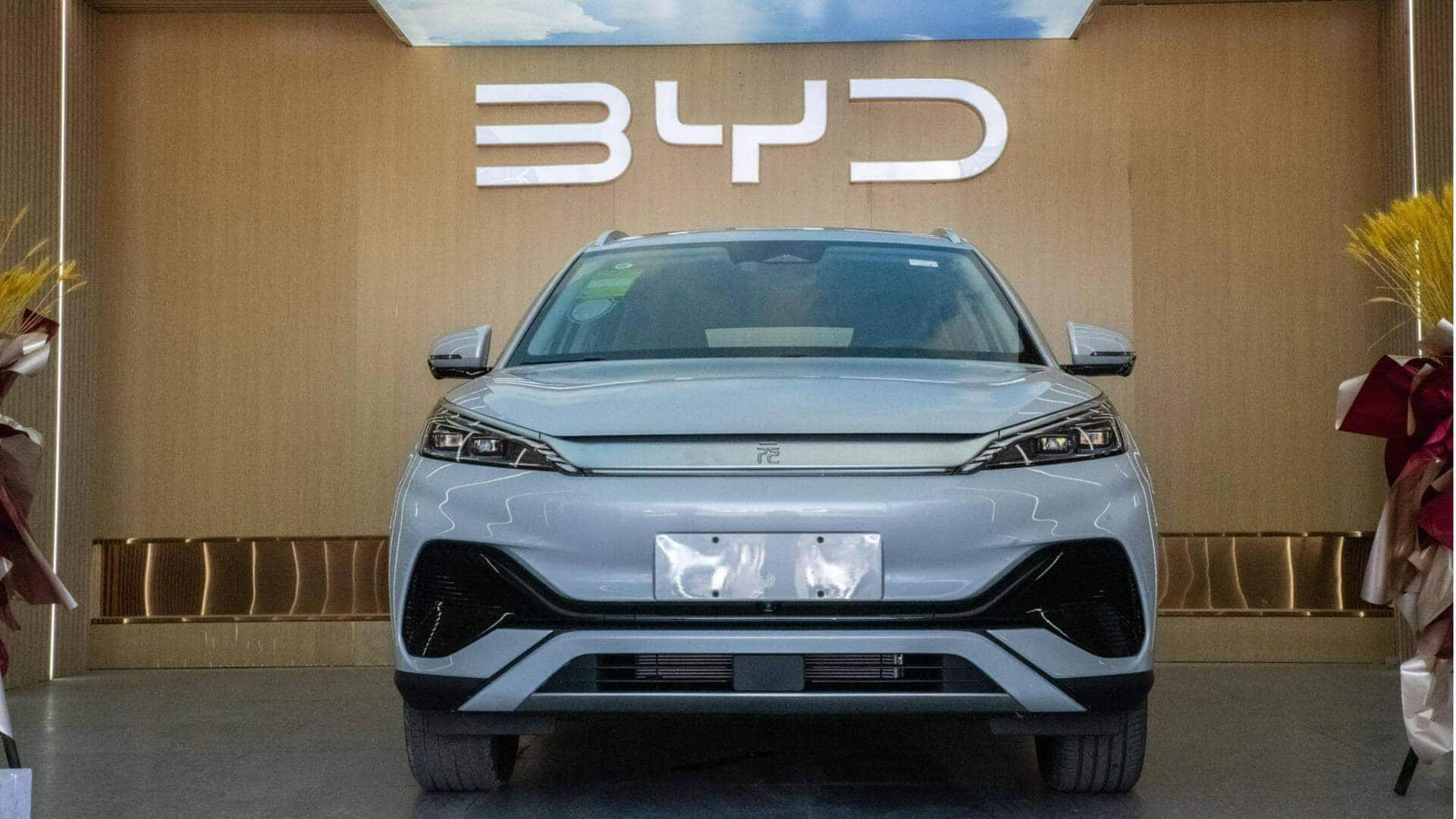
'God's Eye': How BYD's latest autonomous driving system works
What's the story
Chinese automotive giant BYD has introduced its latest advanced driving assistance system (ADAS), named "God's Eye."
This cutting-edge technology aims to improve safety and driving ease across the entire BYD lineup, including even its budget-friendly models.
The launch represents a major advancement in the company's autonomous driving technology, positioning it to compete with Tesla in the electric vehicle market.
God's Eye system will be available in three variants, each featuring up to three LiDAR sensors.
System features
God's Eye C system is the base variant
The base model, "God's Eye C," uses a three-camera cluster behind the windshield and runs on the DiPilot 100 system with peak computing power of 100 TOPS.
It also comes with additional hardware elements like 12 cameras, five mm-wave radars, and 12 ultrasonic radars. All these components combine to deliver full vehicle perception and control.
The front radar has a detection distance of 300 meters, while the ultrasonic radars have an accuracy of up to 1cm.
System upgrades
Advanced versions of BYD's 'God's Eye' system
The advanced versions of BYD's system are "God's Eye B" and "God's Eye A."
The former features a LiDAR sensor for better vehicle perception and is powered by the DiPilot 300 system with 300 TOPS computing power.
The latter, BYD's top-tier autopilot system, features three LiDARs and is powered by the DiPilot 600 system with 600 TOPS computing power.
These will enhance the driving experience in higher-end models under BYD brand.
System integration
BYD's 'God's Eye' system to be standard in all models
BYD Chairman Wang Chuanfu has announced that all BYD models will come standard with the God's Eye intelligent driving system.
This includes popular models like the BYD Seagull, BYD Qin Plus DM-i, and BYD Seal 05 DM-i.
Each vehicle equipped with this new driving assistance system will feature Xuanji architecture, which comprises a central processor, cloud AI, vehicle-side AI, Internet of Vehicles (IoV), 5G network, satellite network, sensors chain, control chain data chain and mechanical chain.
Working
How ADAS tech improves car safety
ADAS tech uses a network of sensors like cameras, radar, and lidar to monitor a vehicle's surroundings.
These systems process the sensor data to identify potential hazards, such as lane departures, approaching vehicles, or pedestrians.
ADAS then provides warnings to the driver or, in some cases, intervenes with actions like braking or steering to help prevent accidents and enhance driving safety and convenience.
These features range from simple alerts to more active interventions.